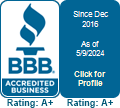Writing and scheduling Blog Posts are necessary skills for anyone who opts to contribute to the management of his/her website. As we have already mentioned in a previous post, blogging provides any small to medium-sized business with a great opportunity to build a reputation as an industry authority and thus increase its traffic and SEO ranking. Blog posts can also be promoted on social media and provide businesses with more pages to add call-to-action messages which help generate inbound leads. However, a blog needs to be managed well by being updated on a regular basis with fresh and engaging material which will promote your services or products. In order to maintain a successful blog, there are a number of strategies you need to be aware of.
Table of Contents
ToggleWhy Are You Writing The Post?
Like with any piece of writing, your purpose for writing a post must be crystal clear. At the same time, you have to utilize the post to promote your organization. Try to capture your readers’ attention with the very first sentence/statement you write. You can start with a rhetorical question, quote, statistic or even a personal anecdote.
Who Is Your Target Audience?
Writing educational posts for teachers is not the same as writing about the same topics for parents of elementary school students. Make sure you know/understand what would interest your audience and what they already know in order to provide them with the information they really need.
Presentation Of Content
Firstly, you have to choose your words carefully and make certain that every word counts and serves a specific purpose. Don’t use “ten-dollar words” that most people would have difficulty understanding. Try to use simple precise words and short sentences, where possible, to make your posts easy to read and understand. What’s more, try to organise your information into short paragraphs or sections with headers, lists, tables, or whatever you think will present it most clearly and accurately. Remember, that your formatting should be consistent to create a professional-looking and visually appealing post.
Also, keep in mind that if you add relevant images (photos, tables, graphs…) to your content, it is more likely to draw a potential reader’s attention. In fact, research conducted by Forbes found that content with relevant images grabs the reader’s attention 94% more than content without images.
Include Keywords
Your posts are meant to drive traffic to your website, therefore you need to use keywords and long-tail keyword phrases. You can start by using them in your blog post titles but without sacrificing your title’s ability to grab your reader’s attention. Another important aspect of including keywords is that you should limit the number of keywords or long-tail phrases to only a couple per post so you can stay focused on the topic of discussion. If you use too many keywords, it can harm the quality of your content and make your post seem like spam to the readers, as well as to the search engines.
In order to make effective use of keywords, you should include them within the first 200 characters of your text, add them several times throughout the post and make sure that they appear near the end. In addition, since search engines place more importance on linked text, it would be wise to place them next to links within a post, if it is relevant and natural. Finally, include keywords in image Alt-tags since search engines use these tags to provide results for keyword searches. Be careful, however, to add keywords that are relevant to the image.
Include Calls-To-Action
Calls-to-action (CTAs) are necessary to ensure that your reader converts on your website’s landing pages. However, you shouldn’t overuse CTAs. If you want to increase conversions, it’s better to use different types of CTAs, in different formats (e.g. clickable CTAs for social sharing or the traditional statements asking a reader to call or email) which will direct your reader to different parts of your website.
In most posts, a CTA is usually placed at the end of the post since it directs the reader to take an action after reading the post. Your CTA can encourage readers to try your services or products but it can also ask them to connect with you on social media so you can inform them about new posts. Of course, this action also makes it easier for them to share your posts with their friends thus attracting more traffic your way. Another useful CTA is one which asks readers to subscribe to your blog by email so you can inform them of new posts, therefore getting them to return to your site. If you want feedback or engagement from readers, you can ask them to comment on your article. Finally, you can add a link in your post that will provide your reader with more information about the topic you are discussing, perhaps from a previous blog post or from one of your website’s pages so you basically redirect traffic within your own website.
Scheduling Post Publication
The majority of experts advise that you need to have a regular publication schedule to which you need to adhere. If you are not consistent with your posts (i.e. posting once a week or every two weeks) then you will not be able to attract regular readers. You need to set aside some time just for writing posts. Most people find it easier to write several posts on weekends, once or twice a month.
Once you have written your posts, you need to determine the best time to publish them. According to research, the ideal time to publish is 11 am on Mondays if you want to attract the most traffic but if you want the most comments, then you should publish at 9 am on Saturdays. Publishing on Mondays and Thursdays, you are more likely to get inbound links. However, by publishing at these popular times, your posts will also have higher bounce rates and they will be lost in social newsfeeds. On the other hand, if you publish at non-peak times, you should get more social shares (e.g. publishing Saturdays and Sundays or between 9 pm and midnight).
Remember to optimize your blog pages for SEO by providing the proper meta-data. You can also inform the major search engines about your new post so they are aware that you have new information to share. However, there is no guarantee that your post will receive a ranking because you submit it manually. In addition, try to promote your posts through emails and social media channels to attract more readers.
If you haven’t made blogging a regular part of your marketing strategy, it’s time you got started. The benefits of a well-managed blog are enormous. It’s an easy way to keep your website fresh and complete, but best of all you’ll be able to develop a closer relationship with your clients and in the process boost your SEO!
Our digital marketing agency provides a satisfaction-guaranteed service designed to competitively maintain your online presence no matter what your budget is. Ready to take your marketing to the next level and dominate online? Contact Savvy Search Marketing to book your FREE SEM/SEO consultation and evaluation today!

